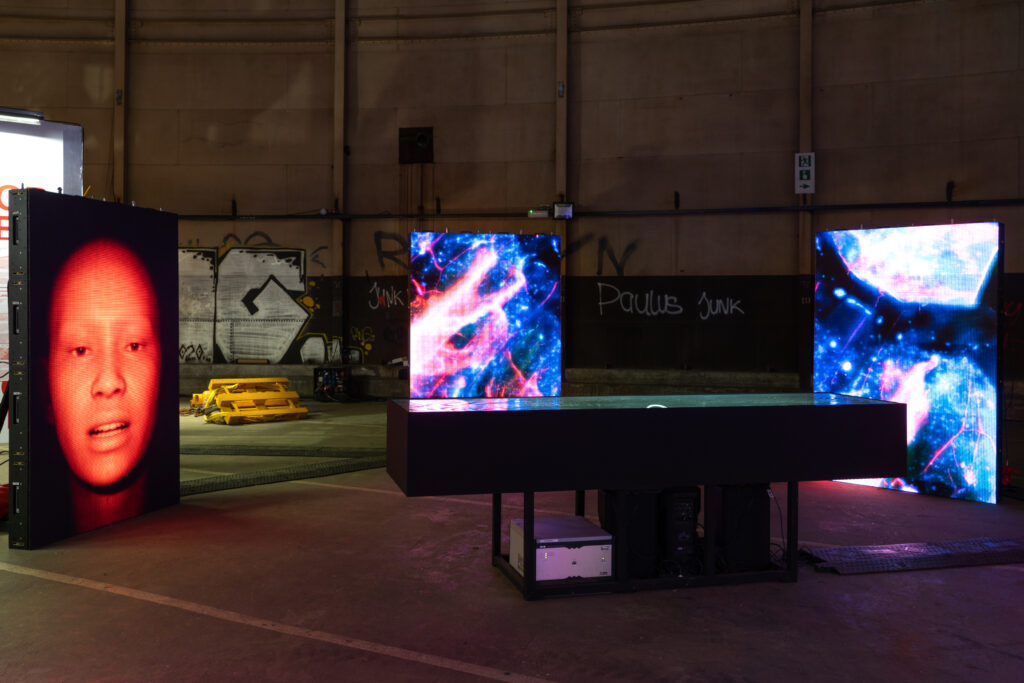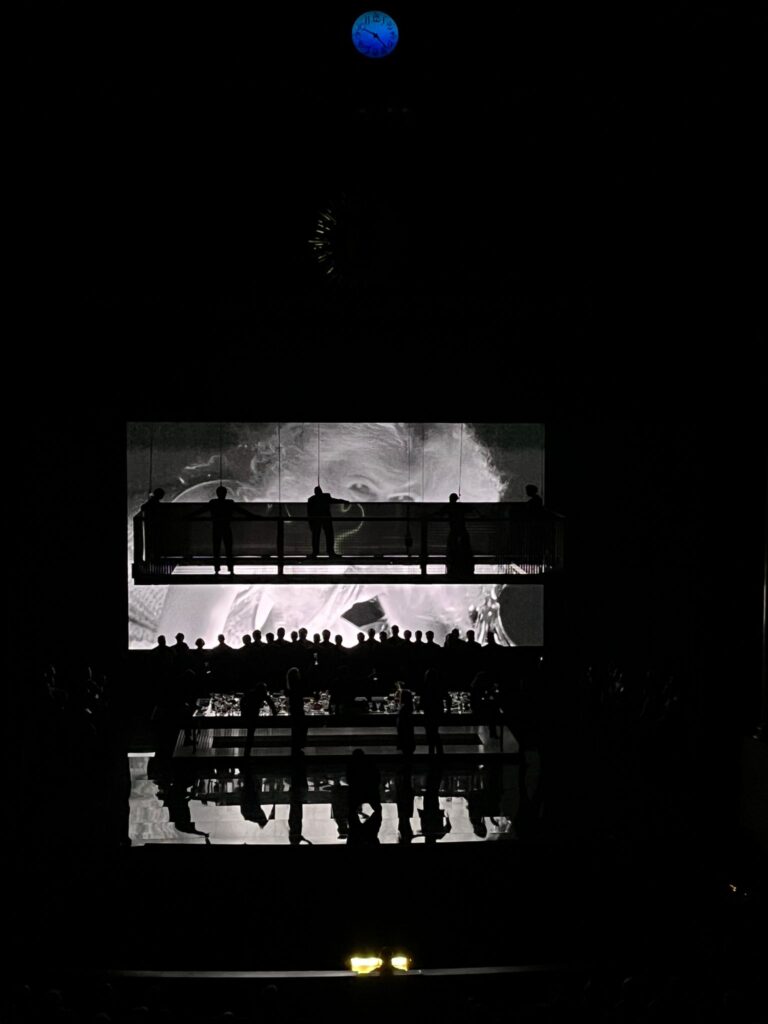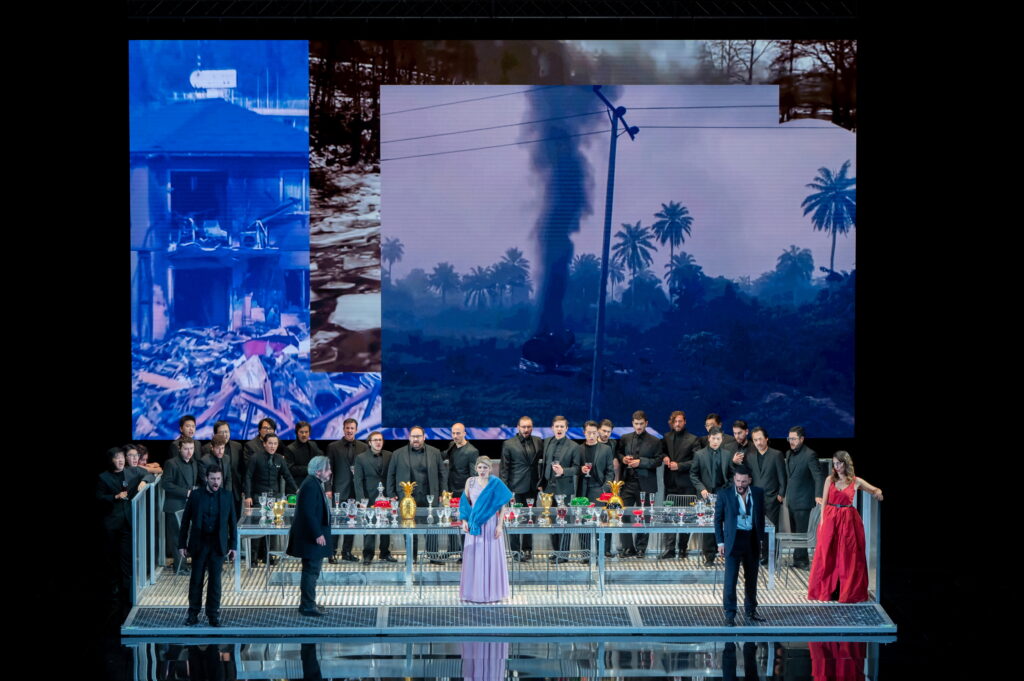2050+

Designing diversity: a conversation with Ippolito Pestellini Laparelli and the transformative path of 2050+
An architect and curator thriving on diversity and multidisciplinarity, Ippolito Pestellini Laparelli honed his skills across various projects at OMA, ranging from the Fondaco dei Tedeschi in Venice to Monditalia, the expansive Arsenale exhibition at the 2014 Venice Architecture Biennale curated by Rem Koolhaas. Four years ago, he chose to return home to Milan from Rotterdam, taking a more independent stance to develop his own agenda. With a team comprising over 15 individuals, including architects, curators, researchers, and art directors, 2050+ has become a hub for diverse talents. We had the chance to catch up with him, delving into discussions about his agency, architectural practice, and vision.
In navigating the intersection of design, technology, environment, and politics, how does 2050+ function as an interdisciplinary platform, and how does the urgency embedded in the agency’s name, ‘+’, influence the nature of its projects and collaborations?
2050+ acts more as a platform than a traditional architectural office. Each project requires a different ecosystem of expertises and perspectives that are either present in 2050+ or are part of our network.

Through the past years we have worked with artists, filmmakers, writers, scientists, philosophers, technologists, etc. in order to dissect and reflect on today’s complexities. For us the only way to remain relevant is to multiply the point of views, to look at crucial and urgent questions from different angles, to constantly negotiate our position as spatial practitioners with other disciplines, while finding a common and actionable ground. We actively look for projects that allow us to remain political and to tackle urgent questions in line with our overall agenda. This is evident in our research work, often commissioned by cultural institutions, but it’s also a goal for the more commercial side of our practice.
In what ways does 2050+ utilize spatial practices as a medium rather than a goal?
Often as an architect you are expected to imagine, design and build spaces to inhabit, but that is just a small fraction of what architecture means as a discipline. Anything we observe, from politics to technology, from science to policy making, from climate to fashion, etc. has spatial implications. Space is a lens to investigate and understand contemporary dynamics and the formats of such explorations range across writing, film making, performance, digital environments, exhibitions, installations and architecture. For these reasons we prefer the definition of “Spatial Practitioners” to the one of “Architects” as it reflects how expansive our definition of architecture is.
Given your belief that emotional engagement has been the driving force behind your choice to embark on this new chapter, could you share which project from the last four years of 2050+ has had the most profound emotional impact on you?
It’s a difficult question and there is no straight answer. I develop different relationships with different projects and that depends on many factors: its political potential, the way it relates to bigger questions, its ability to speculate on alternative presents or futures, or simply its mere aesthetic qualities. If I need to really pick, I’m particularly moved by projects involving live performances, where narrative, space and time come together to deliver a powerful message. The recent scenography for Il Diluvio Universale by Gaetano Donizzetti in Bergamo falls definitely into this category.

Together with the duo of artists film-makers Masbedo, we worked on a version of the classic opera that reinterprets the traditional narrative structure of Il Diluvio Universale to give voice to the “unheard prophets” of today: through the trope of the flood, the opera urged us to face timely and urgent issues related to the climate crisis, social injustices and political instabilities. The imagery of the work was entirely based on climate activism and protesters.

It was a way for us to bring inside an institutional theater and through the medium of a classic opera the instances of climate activists. That’s the reason why we collaborated with Sea Shepherd, a non-profit, marine conservation activism organization, which generously shared footage from their actions that was incorporated into the scenography.
Which significant projects are currently occupying your focus and attention?
We are about to open a research and installation at SALT in Istanbul focused on toxicity and the politics of air in Turkey and beyond. For this project we have collaborated with a local toxicologist and with an Italian AI artist, Lorem, who has produced the soundscape for the work. On the other side of the practice spectrum, currently we are also busy with a project of architectural transformation of the XVIII Palazzina dei Principi at Capodimonte in Naples, which will host the Marcello and LIa Rumma collection of Arte Povera. These are two examples of how schizophrenic life in 2050+ can be…
Originally hailing from Sicily, you grew up in Milan, making your recent experience akin to returning home. A spontaneous question arises: as we look ahead, how do you foresee Milan evolving while maintaining its position in the central space between the Mediterranean and continental Europe?
Milan is a very dynamic city. It’s a relatively small metropolis with a global footprint, where creativity is truly multidimensional, combining design, fashion, art, photography, architecture into a unique social environment. At the same time I’m rather concerned about its recent development after the expo 2015. Milan is a place where real estate speculation is running wild, where inequalities are growing at escalating rates, where bigger and bigger sectors of society are being marginalized and pushed out of the city, where marketing has taken over and environmental policies are insufficient and very fragile. I’d like to live in a city that is open, inclusive, diverse, multicultural…but not just for the rich. Milan should look more to the south and not just to northern european or anglo saxon contexts. I feel Palermo or Naples provide far more interesting models than London in this particular historical moment.
Discussing Milan, there has been a notable resurgence of interest in 10 Corso Como lately, piquing my curiosity to explore the project further. When considering the Project Room and the Galleria, you liken them to a flexible theater or a “transitory museum.” Could you provide insights into the modern significance of these analogies and explain how their flexibility addresses the ever-changing cultural and social demands that the space aims to fulfill?
“The Transitory Museum” is the title of an interesting book on Corso Como 10 by philosophers Emanuele Coccia and Donatien Grau. It argues that categories that have governed for long our modern lives, such as art, fashion and the museum are being redefined, and that clear boundaries between such categories are being dissolved. As the first ever concept store, Corso Como 10 embodies the notion of a transitory museum, or a space without a fixed role or identity, where the relationship between contents, audience, display and architecture is constantly reinvented. It’s a spatial manifestation of the current state of instability and uncertainty that our society is permanently experiencing – or of a “liquid society” to use the words of another thinker, Zygmunt Bauman – a condition accelerated by the continuous osmosis between our physical and digital interactions.
Our approach to 10 Corso Como is not based on fixed categories – a retail space, a gallery, etc. – but rather on the underlying idea of a framework able to support a virtually infinite repertoire of curatorial configurations and experiences through a finite set of devices. In this sense, both the Gallery and the Project Room are vague spaces, ready to unlock any potential.

Beyond their functional purpose, what narrative motivations led to the introduction of micro-architectures like the large pantograph tables in this specific space?
The pantograph tables respond to various needs and sets of inspirations: they refer to the subtle industrial character of the building and they give shape to the idea of machine or “flexible theater” that we had in mind for these spaces. These elements are adaptable, moveable, they can change height and configuration, or they can simply be stored away leaving an empty space behind. They are silent actors on stage, moving according to different choreographies. Like the moveable walls-units for the Gallery, they are tools at the service of our imagination.

More in general, the entire project was premised on the idea to give a spatial translation to the interdisciplinary character of Corso Como 10, a place where fashion, art, photography, design, urban nature come together into an unicum. To do so we have operated following a principle of “selective archeology”, removing all the unnecessary layers and materials accumulated through time and bringing back the architecture to its original, gentle industrial character. This approach has allowed us to reconnect spaces which were once disconnected and to facilitate the osmotic flows of visitors across all its programs and experiences. In line with this attitude we have inserted a number of “micro architectures” – new stairs, service spaces, accesses, etc. This results in a system of new volumes marked with a different materiality (i.e. steel) that rationalizes the organization of each floor and connects all levels of the early XX building from ground floor to the newly renovated green terrace, through a continuous loop.


Under the new leadership of entrepreneur Tiziana Fausti, 10 Corso Como appears poised to take a swift step into the future. If we were in 2050, how do you envision the gallery’s transformation?
I’d rather not say. The present is dense enough of challenges. Let’s focus on our time; maybe this the best way to address our future.
In order of appearance
- Nebula, 2050+
Photography by Lorenzo Palmieri - Synthetic Cultures, 2050+
Photography Gaia Cambiaggi - Henraux Foundation, 2050+
Photography by Querceta - Il Diluvio Universale, 2050+
Photography by 2050+ - Il Diluvio Universale, 2050+
Photography by G. Rota - 10 Corso Como Project Room, 2050+
Photography by Alessandro Saletta, DSL Studio - 10 Corso Como Project Room, 2050+
Photography by Alessandro Saletta, DSL Studio - 10 Corso Como Gallery, 2050+
Photography by Alessandro Saletta, DSL Studio - 10 Corso Como Gallery, 2050+
Photography by Alessandro Saletta, DSL Studio
All images courtesy of 2050+